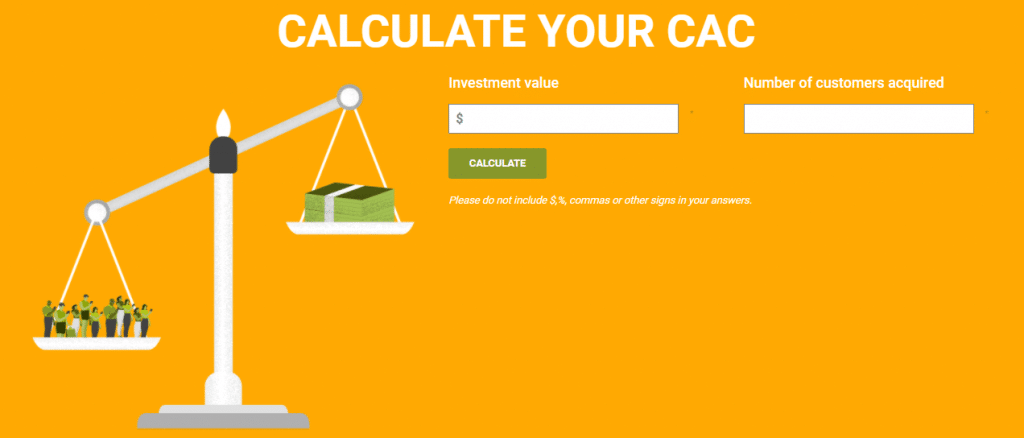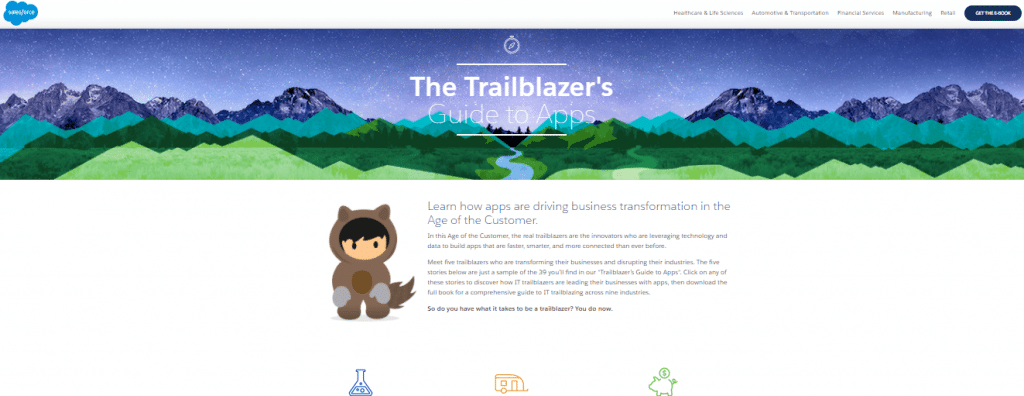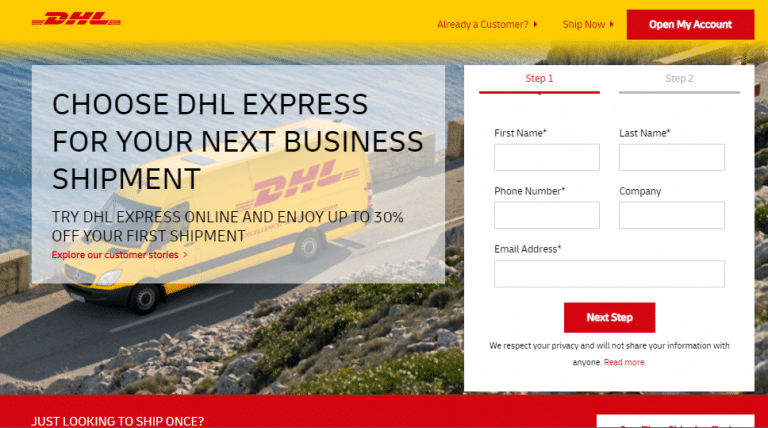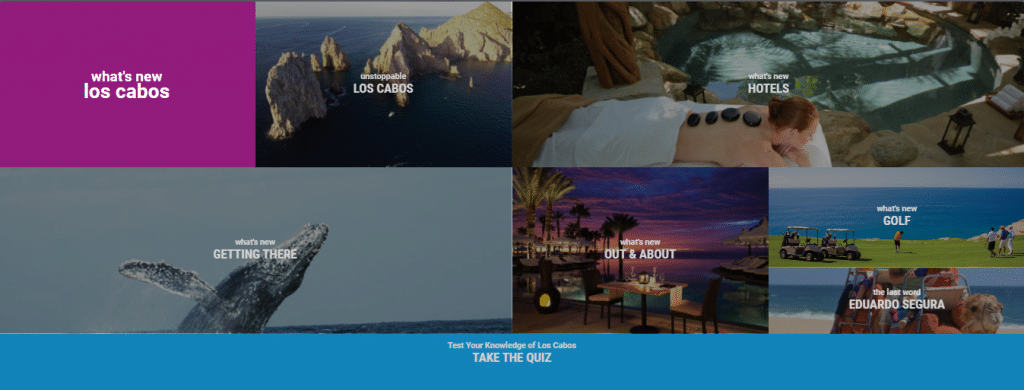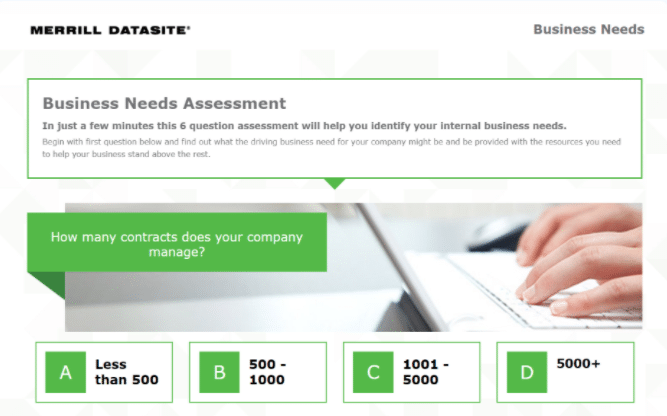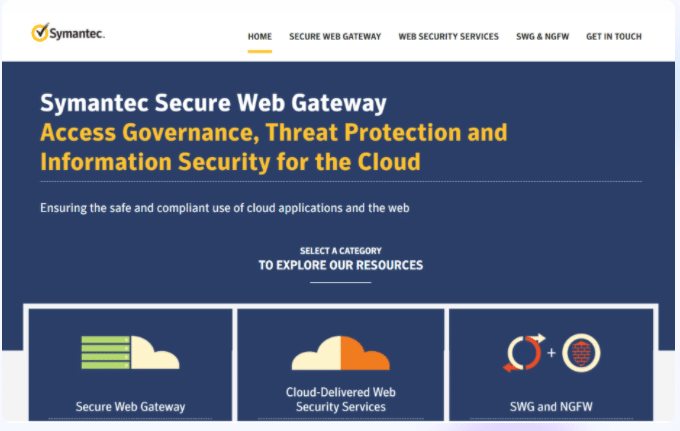How To Produce Interactive Content And Why You Should

By Prebuilt Sites Team
January 26, 2022
EDITOR’S NOTE: This blog post is an in-depth guide on interactive content. What interactive content is, the benefits of it, different types of interactive content, and how to produce it. It’s no secret that nowadays people’s attention spands are shorter than ever and we get bored more easily than we used to. Interactive content solves that problem on the web by encouraging engagement and feedback from your audience. It can help guide them on their buying journey, thus resulting in more leads or conversions. There are many types of interactive content such as: videos, quizzes, questionnaires, calculators, maps, lookbooks, and more. The type of interactive content you use depends on your niche and your goals. If you have any questions about how to use or produce interactive content or want us to do it for you, reach out to us at Prebuilt Sites or The BBS Agency. We’d love to help you out!
Have you ever caught yourself taking a test to find out what kind of friend you are or enjoying fun with animated infographics on the web?
It’s undeniable: interactive content like those really grabs our attention!
People like creative and stimulant content, which escapes from the ordinary and lets them interact.
For brands, such materials are much more effective than traditional approaches to advertising and sales. That’s why this kind of content is gaining more space in marketing strategies.
Interactive content is the new strength of Content Marketing. Until recently, this strategy included mostly static materials, such as ebooks and blog posts.
The time has come to encourage your audience to participate and engage with your content. And that’s what we’ll talk about in this article.
Next, you’ll find information about the following topics:
- What is Interactive Content?
- What Are The Benefits of Interactive Content?
- What Types of Interactive Content Can You Produce?
- How to Produce Interactive Content? 5 Tips to Take Advantage of This Strategy!
- What Are The Best Tools to Produce Interactive Content?
Keep on reading!
What is Interactive Content?
Interactive contents are dynamic materials that encourage user participation in order to convey your message.
They don’t necessarily need to be digital. Still, it’s on the internet that this type of content gains a myriad of formats — calculators, quizzes, and animated infographics — and generate new possibilities for user interaction.
The power of media interactivity has leaped forward with the emergence of the internet, especially after the popularization of blogs and social networks.
Since then, brands have started to get used to the participation of consumers in their content.
However, Content Marketing relied preponderantly on a logic of passive consumption. In other words, brands publish content and wait for feedback from users, through likes, reactions, comments, shares, or browsing behavior analysis on websites and blogs.
It’s already much more interactive than we had in offline marketing or the early days of the internet. Still, brands could go further.
Then, the interactive content emerged to provide a more exciting and fun approach for the consumer, given the vast amount of material they have to consume on the web.
This type of content demands that the user interacts with the material to receive the information they want in a much more attractive way than just reading a text.
Each interaction with the content represents a sign from the user to the brand. Mary Ward, CCO of Rock Content, defined interactive content as something that leads people to give feedback.
It’s different, for example, from when the consumer downloads a PDF or reads a text on the blog, since, in these cases, there are no feedbacks during content consumption.
Thus, interactive content allows brands to understand whether people have actually consumed their material while providing a much more exciting experience for the consumer.
What Are The Benefits of Interactive Content?
Interactive content is increasingly gaining strength in marketing. But do you want to understand better whether it is worth investing in this kind of material in your strategies?
So, let’s list now what the main benefits of interactive content are!
Combine content and experience
Ebooks, infographics, and blog posts are valuable for educating consumers because they bring a lot of information.
When they become interactive, they add something that attracts and engages people: fun.
Interactive content, therefore, combines information and entertainment. Thus, the user feels stimulated to consume that content, which contains triggers to hold their attention.
For example, a quiz requires the person to go through all the questions and get the answer, which can be more difficult in an ebook or blog article.
So the content stops being passive and static to provide a better consumer experience for your audience.
This change is even more relevant if we consider generation Y — the millennials, born between 1980 and 1995, who are in the market dictating trends and influencing consumer behavior.
These young people have seen the internet being born, and the world becomes faster. That’s why this generation is dynamic and immediatist.
There’s no point in offering static, boring, and irrelevant content; they need innovation, challenges, and experiences. Interactive content, therefore, meets their desires.
Concerning the generations that come in the sequence, the dynamics of content will no longer be a choice, but a necessity to communicate with them.
Increase engagement
Offering an interactive consumer experience instead of static content is the way to increase your engagement rates. This is the great benefit of interactive content, which becomes a solution in marketing.
Content Marketing has grown so much that it has saturated consumers with many stimuli and posts on blogs and social networks, often lacking quality or relevance.
With little room to attract this information-rich consumer, brands need creative ways to capture their attention. Interactive content solves this issue.
Passive content makes room for the emergence of interactive formats, which increase the time of engagement and the level of involvement with the brand.
When reading an interactive infographic, for example, the user is surprised by a new way of consuming information, much lighter and more fun. This encourages them to read all the material, grasp the message, and even share it with their network.
This increase in engagement is evident when analyzing metrics such as time spent on the site or link shares (referral traffic).
In addition, you can also analyze consumption metrics to understand if users actually consumed all the interactive content.
Get more feedback from users
Another benefit of interactive content is the ability to receive a rich array of feedback data from users.
As we have said, passive content does not show whether the consumer has actually consumed a material.
For example, you only know how many users have downloaded or scrolled to the end of a blog page. But you can’t tell if they read the content, can you?
Interactive content, on the other hand, collects data during content consumption. You can identify views, clicks, and interactions with each element of your interactive material, as well as evaluate exit points.
According to Scribblelive’s survey, 60% of organizations that use interactive content can better measure their efficiency, while this percentage is only 25% among those that use static content.
For example, let’s say that you’ve created a questionnaire so that the client understands what solution they need to solve their problem.
Each question answered represents a metric to verify your strategy’s efficiency and get to know the user better.
So you can verify that users have covered all of your content and collect valuable data about your audience, behaviors, pains, and needs, which can then be used to optimize your strategies.
Therefore, the benefits of interactive content are not limited to Content Marketing — they can contribute to your entire marketing strategy.
Optimize lead generation and conversion rates
Interactive content not only generates more engagement — it also brings results in lead generation, sales, and revenue.
After all, dynamic content, with visual appeal, provides a richer experience and is capable of awakening consumers’ desire. Besides, by holding their attention, this type of content can also guide them on their journey to conversion.
For this, you can count on tools to create interactive content (later on, we will introduce some of them).
Some of these tools offer features to optimize conversions and test applications to determine which ones work best.
For example, you can test two layout versions of your landing page to find out which one generates the most conversions.
This way, you make the user experience more interesting and reap better results from your content.
What Types of Interactive Content Can You Produce?
Here we’ll show you what types of interactive content you can publish and give you some examples to inspire your production.
Some of these materials are interactive in nature, like quizzes and calculators. On the other hand, there is content that can be turned interactive, such as ebooks and infographics.
Also, keep in mind that you can merge different types of interactive content into one material.
The same page can present an interactive infographic and, in the end, include a quiz for the user to test their knowledge on that subject (and for you to check the efficiency of the content).
Now, let’s learn about some of the best types of interactive content and get inspired!
Quizzes
A Quiz is a form of interactive content that has already won many fans! They have become popular on the web with Buzzfeed tests and have become interactive tools for several brands.
They can be used to educate and entertain the audience, usually with a light and fun language, as well as capture insights into their maturity in the subject matter.
When they are creative and relevant to the audience, they also have a good chance of going viral!
See, for example, this quiz that seeks to solve many myths about washing machines.

Photo: Rock Content
Calculators
Calculators are interactive content that helps show how your product can be positive to the customer’s budget.
You can show how the client can save, make money, or plan financially, depending on the type of solution you offer.
This type of content can be combined with material that explains the value of your product to the market, so that the calculator corroborates what you’re saying.
Here at Rock Content, we have created a CAC (customer acquisition cost) to help marketers understand how much they spend acquiring new clients.
Ebooks
Instead of delivering a static PDF to your audience, how about creating interactive content to present the information in an ebook?
You can combine text with videos, images, graphics, and animations. With interactivity and visual appeal, ebook consumption becomes much more interesting and enjoyable.
Here, you can see an example from Salesforce, which has turned an ebook into an attractive page full of animations.
In this example, anyone who still wants to save the material in PDF format can download the file after entering their contact details.
Infographics
Infographics are already a way to transmit data and information with visual appeal. But did you know that you can make them even more attractive?
Just add points of interactivity with the material, so that the reader participates in the content.
Take, for example, this interactive infographic that explains complex information about energy microgrids. The material includes interactive buttons, statistics and facts.
Netflix has another good example of how to transmit information and data in a way that is attractive to the reader.
Cocainenomics is a case of branded content used to promote the Narcos series and brought a lot of data about narco-trafficking. In the end, it also includes a quiz on the information presented.
White Papers
White papers usually present more technical content than ebooks and blog posts. They go straight to the point and act as a manual or guide for executing a strategy or action.
So making them interactive is one way to make this material more attractive and understandable.
Landing Pages
A landing page has a clear objective: to generate conversions. Adding interactivity to these pages can help to trigger the visitor’s desire and convince them to leave their contact details to become a lead.
Below you can see an example of a DHL landing page with visual and animated content that makes the experience more interesting.
Lookbooks
A lookbook is a very visual material, usually composed of photographs, widely used by fashion brands to present products, models, photographers, and designers (although it can be used in any niche).
However, lookbooks are usually static, in PDF format, or even printed.
To make them more attractive, you can create interactive lookbooks.
Travel operator Northstar Travel has created an interactive lookbook to present Los Cabos destination and has included a quiz and contact form at the end.
Questionnaires
The questionnaires are similar to the quizzes, but generally feature more serious language and more in-depth content. The intention is not only to entertain but mainly to help the consumer in their journey.
At the beginning of the journey, the questionnaire can help them identify their needs. At the end of the journey, the material will help you to show what solution they should adopt to solve their problem.
In this way, you can also collect data about this consumer to determine what stage of the journey they are at.
Based on that, you can decide what marketing and sales approaches should be used.
This questionnaire, for example, helps companies identify their contract management needs through six strategic questions.
In the end, the user provides their data to receive the results and recommendations from the company.
Resource Library
A resource library brings together different content that a company has already produced for its Content Marketing strategy.
Instead of offering a list of links for users to access these materials, you can create an interactive page to make it easy for them to find what they want.
This is what Symantec has done with its resource library, which is divided into categories and also includes restricted access areas.
Photo: Rock Content
Solution finder
The solution finder also reminds us of a quiz or a questionnaire. However, it has a more specific goal: to guide the consumer through questions to find the right solution to their problem.
For example, this site helps consumers choose the right extended warranty for their car, which can be difficult and boring to describe.
With the final answer, the user is directed to a page where they can sign up for the plans the company offers.
Vídeos
Videos are already a kind of engaging content because they have a more dynamic look and narrative than textual or static content. But they can be even more attractive if they invite people to interact with the content.
For example, YouTube allows you to insert interaction buttons that direct users to other videos they might want to watch.
It was based on this feature that a New Zealand pizzeria create an interactive experience for users on YouTube.
The content invites people to help a pizza delivery guy do his job without getting killed by zombies. Throughout the story, the user is invited to choose the alternative that will take them to the next content. Cool, huh?
Search results
Presenting the results of a survey, full of data and graphs, could become boring for the target audience. Therefore, creating interactive content to present this data can be more efficient for people to grasp the information. An interesting example is the Selfiecity project, which investigates the ways people take selfies in different cities around the world.
On the site, you can browse the data collected in interactive graphics and better understand the search results.

Photo: Rock Content
Maps
Since Google Maps became popular, interactive maps have become increasingly used for different purposes. They are useful to entertain or inform, in a similar way to an interactive infographic, but with geolocation data.
Want an example? In the Cocainenomics project, which we presented earlier, Netflix used an interactive map, based on Google Maps, to show the routes of narco-trafficking in recent decades.

Photo: Rock Content
How to Produce Interactive Content? 5 Tips to Take Advantage of This Strategy!
To produce relevant content, you need to think about the buyer persona first.
Who is your audience? How do they behave? What are their pains and needs? From then on, you have the public in mind to produce your materials.
To produce relevant content, you already know that you need to create a persona, understand your audience’s pains, and set goals before anything else. These steps apply to any kind of content.
Now, we’ve selected a few tips that are also valid for your entire Content Marketing strategy, but that can really help with interactive content.
1. Use content you already have
At the beginning of an interactive content strategy, you can use materials that you already have and that have the potential for interactivity.
Thus, you give them a new format and a new purpose.
Select, for example, an ebook that has generated enough engagement to turn it into an interactive page. In the end, you can add a quiz to test the visitor’s knowledge.
2. Produce interactive content for the funnel steps
With an eye on the buyer persona’s pains and marketing goals, define what content you will produce thinking about the funnel stages.
This is essential if your interactive content is to fulfill its function in the sales cycle — making the lead advance in the funnel faster — rather than wasting efforts on pointless publications.
A visual and attractive lookbook, for example, can be used at the top of the funnel to attract the lead’s attention.
A calculator is ideal for the bottom of the funnel, when the lead is already at the final moment of the buying journey and needs to realize the financial benefits of acquiring your solution.
3. Create interactive content with responsive layout
You already know how important it is to adopt responsive web layouts, in a context where the consumer uses their mobile phone for everything, at every stage of the buying journey.
That’s why responsiveness also applies to interactive content.
Since this type of content involves many buttons, animations, and user interactions, you need to make sure that all elements work well on any screen size.
Content creation tools usually already include this functionality, but it is always important to test them before publishing them.
4. Optimize strategies with collected data
The interactive materials allow one to collect a vast amount of data about the consumer.
As we have said, you identify whether the user has downloaded content and whether they have read the entire content and absorbed it.
But this data is only of value to your company if it’s used to generate insights and optimize marketing strategies.
They can help you to:
- get to know the consumer better;
- build the brand persona;
- optimize the segmentation of marketing campaigns;
- customize marketing approaches;
- improve sales approaches.
5. Capture visitor contact data
Don’t miss the chance to collect visitor data to nourish them along the sales funnel.
When you offer a quiz or survey, you can release the answers only after the user has informed their contact.
In a solution finder, you can request the visitor’s email address to send them personalized directions.
It is important to show the benefit you will offer if the user informs their contact details.
What Are The Best Tools to Produce Interactive Content?
So, do you want to start producing interactive content, but don’t know where to start? Some interactive tools can help you with this task!
Instead of hiring a developer to create each piece of interactive content, you can create dozens of them on your own, using templates and easy-to-use features.
Let’s show you some options now!
Ion
Ion, Rock Content’s platform, is the main reference in interactive content production.
It offers templates with a responsive layout for the different types of interactive content we presented in this article, without you creating a single line of code.
It also offers optimization testing capabilities to know which materials will generate more conversions. You can also measure their performance to see if they have achieved the results you would like.
Below you can get an idea of what the tool looks like and how easy it is to use:

Photo: Rock Content
Dot
Dot is another example of a platform that allows you to create interactive content.
Through simple-to-use features, you can create quizzes, calculators, lookbooks, questionnaires, among other types of interactive content, all on your own from templates.
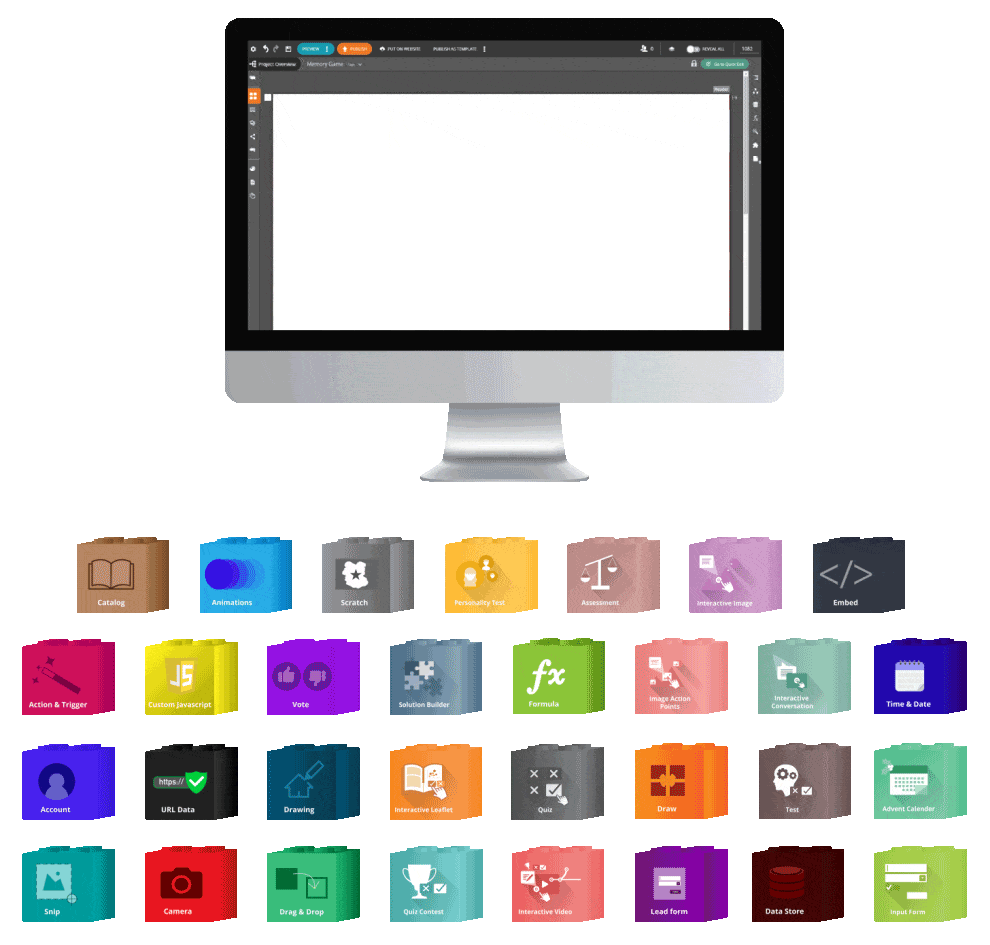
Thinglink
Thinglink is another platform option for creating interactive content. The tool allows you to create interactive infographics, presentations, maps and videos, and includes features for photos and videos in 360 degrees.
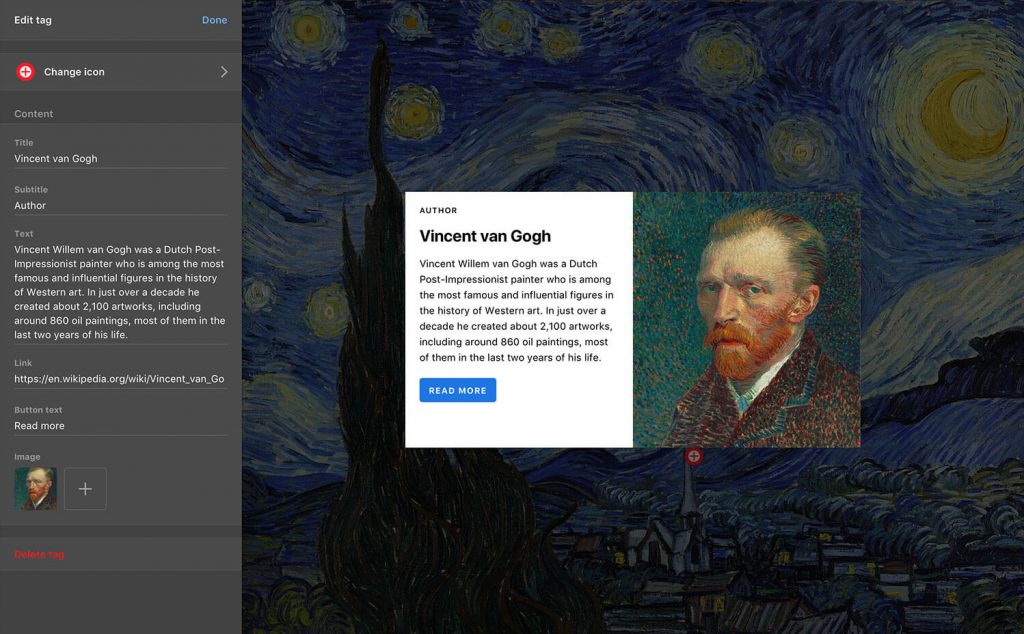
Photo: Rock Content
Typeform
The Typeform is already a well-known tool for creating online forms with a simple, beautiful, and responsive layout.
But maybe now you’ll notice this tool with fresh eyes since it allows you to create interactive content and embed forms, surveys, quizzes, and polls wherever you want.
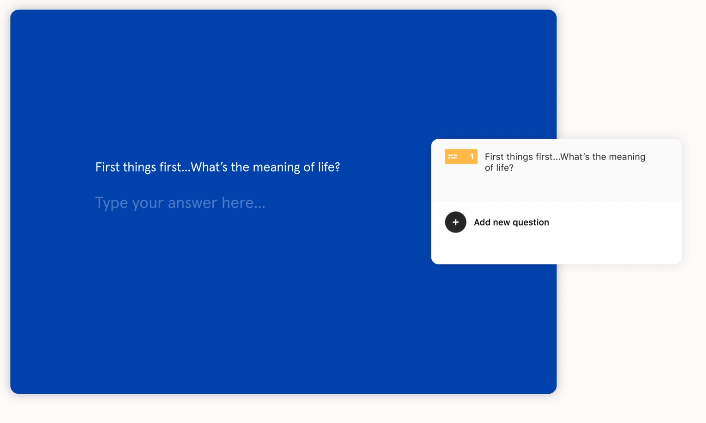
Photo: Rock Content
Mapme
Mapme is very good for creating interactive maps. You can add photos, videos and 3D buildings, create location categories (e.g., restaurants, schools, museums, etc.) and customize the map with colors, shapes, icons, and pictures.

Photo: Rock Content
Anyway, now you know the importance of interactive content for your strategies, and you understand what you need to do to start producing this kind of material.
Realize that we are talking about a type of content that can differentiate your publications from your competitors, considering so many blog posts and ebooks that overload the consumer with information.
In an interview with Rock, Mary Ward said that this is a trend for the next few years, which is already noticeable around the world. Creating less content, but with more accuracy and impact, is what will bring more quality to digital strategies.
Do you want to know more about how Rock Content can help you leverage your strategy? Request a demo on Ion, Rock’s interactive content platform!
Originally posted on Rock Content.


